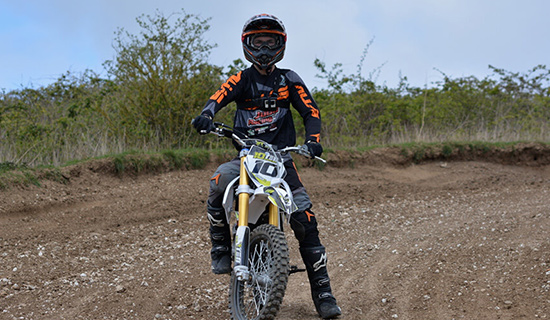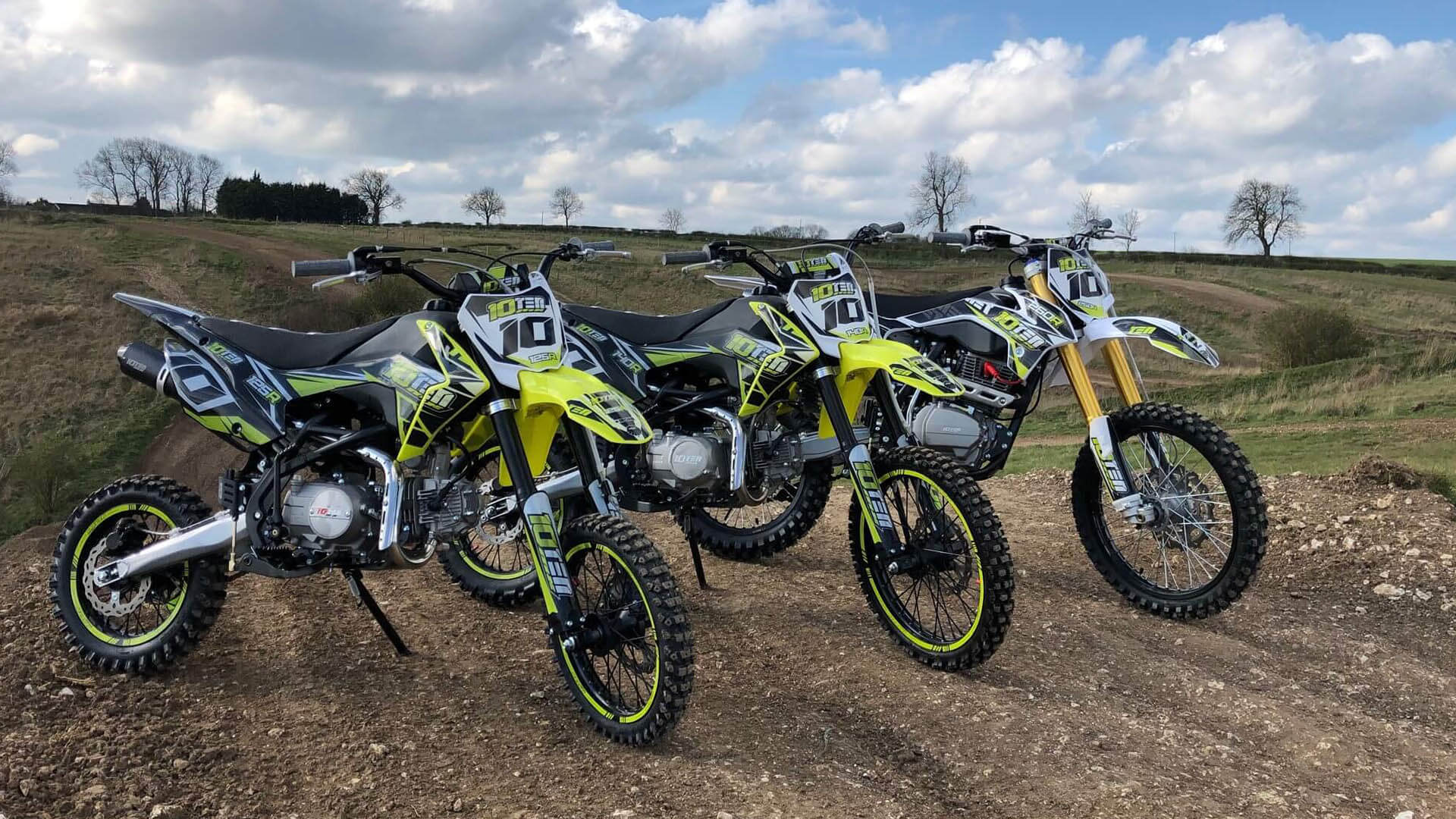Just starting out? Nip bad habits in the bud by checking out our advice below:
Before you begin: It’s a good idea to get a feel for the terrain you will encounter on a dirt bike. If you own a mountain bike, we recommend taking it for a spin on the dirt!
Positioning your body on the bike
Sit towards the front of the seat
A dirt bikes centre of gravity lies above the motor. Here, you can control how your weight is distributed and keep the bikes front wheel grounded.
Squeeze the fuel tank with your knees
It is important to squeeze the sides of the bike with your knees, especially when in standing position. This is because it helps align your body position, which increases overall control over the bike.
Have your elbows up and out at right angles
Remembering to keep your elbows up is probably the most important body position to maintain. Having your elbows at a 90-degree angle or above is best. Extending your elbows and allowing them to be parallel to the handlebars will give you full control over the dirt bike.
If your elbows are by your side, you will lack the control over the dirt bike necessary to navigate obstacles. Keeping your elbows up will engage your biceps, shoulders and forearms, giving you full control.
Put the balls of your feet on the footpegs
The back brake can be difficult for a new rider to get used to, especially if you are stepping off a mountain bike and onto a dirt bike.
Keep the balls of your feet on the footpegs and slide your feet forward, just enough to reach the shift lever and the back-brake lever.
Your right foot should be close enough that you do not need to pick up your foot. This can cause you to catch the brake which can cause you to skid.
Try not to have the left foot too far forward so that you don’t upshift and downshift accidentally. Your foot should be just forward enough to upshift and downshift through the gears.
Choosing the right gear
It normal for many new riders to have trouble deciphering which gear to be in, but it will become more natural as you get a feel for your bike. Take the time to learn the characteristics of your bike. Learn the points where your bike revs out and needs to change up, as well as how to change to the correct gear, especially going into and out of corners.
Most riders will be familiar with engine characteristics and know roughly when they need to change gear. Listen to your engine to help guide you. If you can’t accelerate in the gear you are in, you need to change gear!
Patience
A good way to learn to control your balance is to manoeuvre the bike slowly in a figure eight. The centre of gravity is right below the seat where the frame sits around the engine. You can practice this to improve your control and practice the body positions discussed above.
Read the terrain
The terrain you will encounter riding a dirt bike is not consistent, and a dirt bike will handle differently on gravel to sand, or after rainfall. Learning to read the terrain takes experience and judging the stopping distance required for each terrain should be learned slowly.
Accidents happen!
Riding a dirt bike is by no means an easy sport. You are guaranteed to drop your bike, slide off, lose your balance etc. As long as you are wearing your protective gear, these trials and errors are just a natural part of the learning process!
Read our article on dirt bike clothing here.



